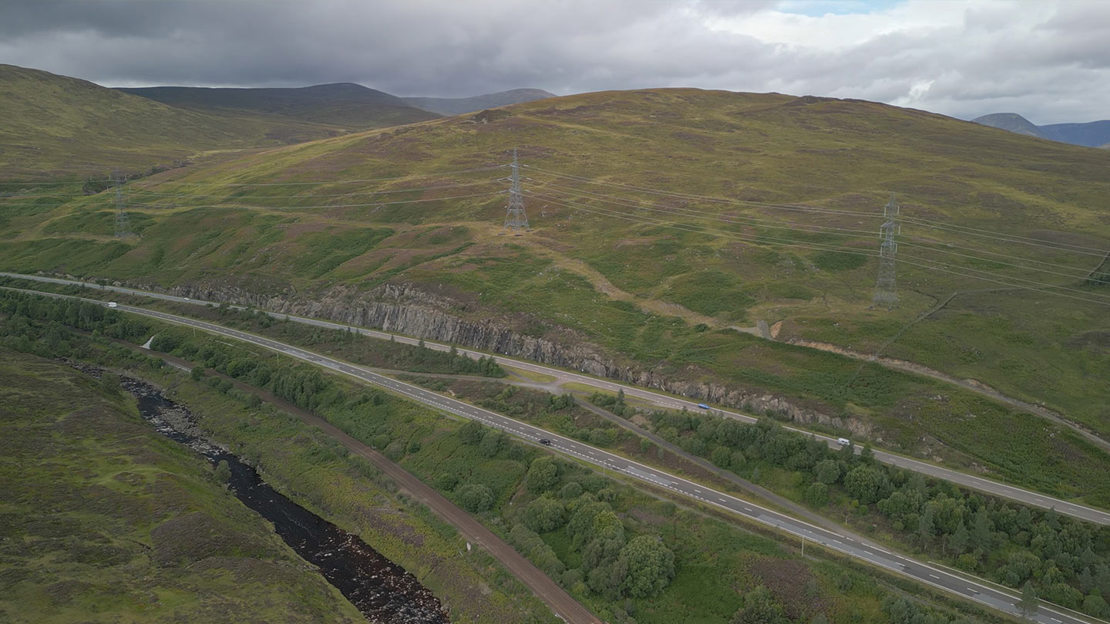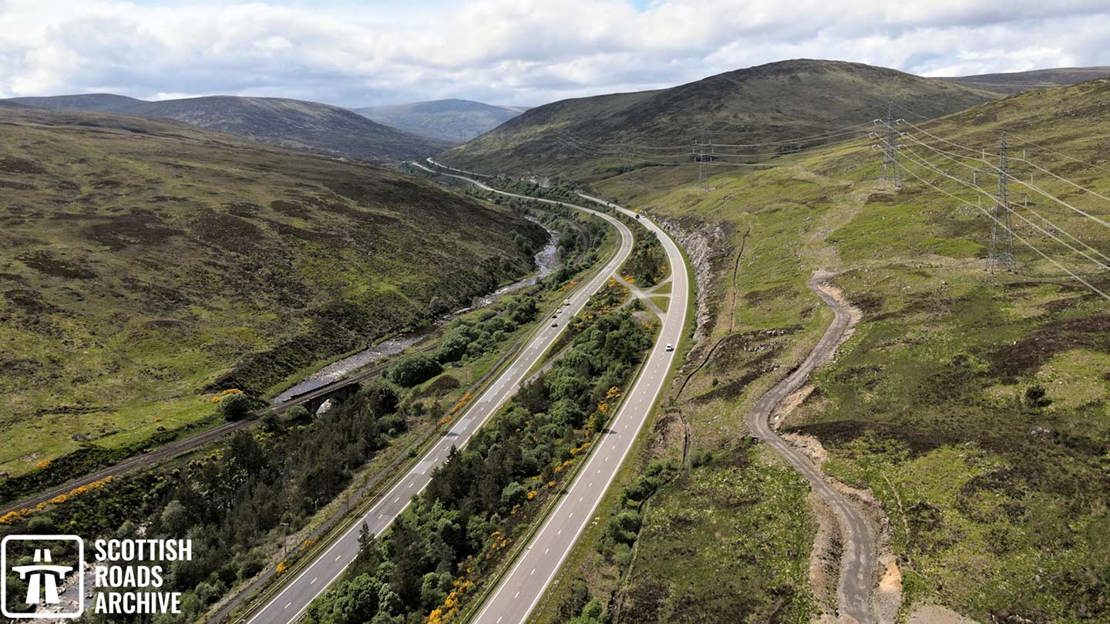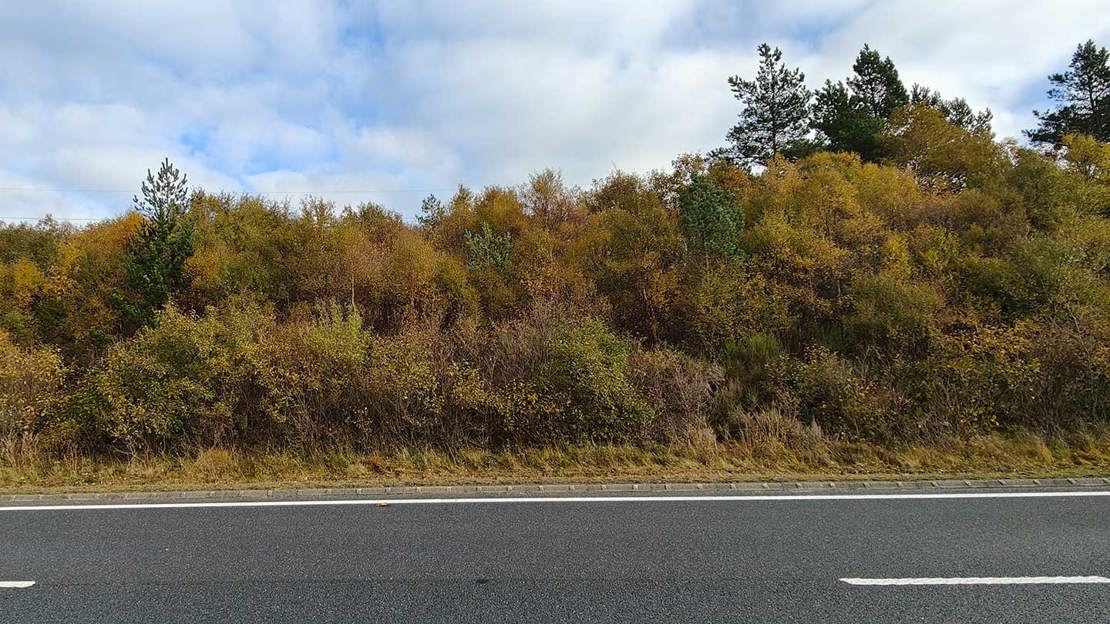A9 central reservation is in a better state than surrounding hills

PR & communications officer - Scotland
A central reservation of one of Scotland's busiest roads, the A9, is in a more natural state than the surrounding hills.
The central reservation of the A9 is an unlikely beacon for rewilding and every Scot should be able to see at least three mature trees from where they live and work, says a report launched by Woodland Trust Scotland at the Scottish Parliament on Tuesday 28 May 2024. The wide-ranging, 35-page policy paper aims to show how woods and trees can drive nature recovery to benefit everyone in Scotland.
Other proposals in ‘Trees and woods: at the heart of nature recovery in Scotland’ include a call for deer and grouse estates to switch to more nature-positive models.
Woodland Trust Scotland director Alastair Seaman said:
"This vision is profoundly pro-people as well as pro-nature. It improves the health and wellbeing of everyone, including the majority who live in towns and cities. It supports our farming community and our food security, and it respects those in our rural communities whose livelihoods depend on Scotland’s important tourism and wildlife management sectors."

The A9 paradox
The paper points to the paradox that the central reservation of one of Scotland’s busiest roads is in a more natural state than the hills that surround it.
Alastair Seaman said:
“There is a strip of vigorous natural regeneration in the middle of the A9, south of Dalwhinnie. By stark contrast, the surrounding hills are almost entirely bare. Let's be clear, we are not saying build more roads to grow trees on, but that the central reservation is a rebuke to the state of the surrounding hills along much of the A9. It illustrates the potential ready to be unleashed across the landscape when the burning and overgrazing stops.”
The stretch of road, which runs for around six miles south of Dalnaspidal, is almost exactly at the geographical centre of Scotland.
Work on dualling the road was completed in 1979, according to the Scottish Roads Archive. Images from the early 1990s show little growing on the central reservation, but today many sections are thick with naturally regenerating trees including willow, birch, pine and rowan. There are also trees growing between the road and the railway line, all likely seeded in from a few fragments of woodland clinging on in steep gullies. They have been able to establish on this strip because the busy carriageways keep deer out and the central reservation is not subject to muirburn.

The 3-30-300 rule
Everyone should benefit from trees regardless of where they live or their socio-economic status. The 3-30-300 rule is increasingly being adopted by cities across Europe as a simple, evidence-based standard.
Every citizen should be able to see at least three mature trees from where they live and work.
There should be a minimum of 30% tree canopy cover in every neighbourhood.
No one should be more than 300m from their nearest park or greenspace where they can experience nature.
Nature-positive sporting estates
The paper calls for traditional Highland grouse and deer estates to transition to nature-positive models with lower densities of quarry and greater native tree cover, an approach already being pioneered by several estates.
The Highland sporting sector should work with Visit Scotland and NatureScot to develop a Scottish sporting market that is focused on commanding a premium for its nature-positive model.
Practical and achievable actions
The paper sets out a list of comprehensive, practical and achievable actions that are needed to ensure that thriving native woods and trees contribute powerfully to Scotland’s nature recovery.
The most significant requirements are to:
- reduce deer numbers and maintain populations at sustainable numbers that will allow our woodlands (and many other habitats) to recover and extend naturally
- incentivise farmers to integrate native trees, woodlands and hedges into farming systems through the new farm payment systems that are currently being developed
- develop new options under the Forestry Grant Scheme to incentivise the creation of river woods, urban woodland and mountain woodland, and new native woodlands that will extend and link our most important ancient woodland fragments
- establish a Rainforest Restoration Fund to restore this globally significant habitat by addressing key threats including Rhododendron ponticum, overgrazing and fragmentation
- strengthen biosecurity measures to reduce the risk of importing new pests and diseases that threaten the future health and quality of our native woods and trees.
Alastair Seaman added:
“Nature is in trouble in Scotland. We are one of the most nature-depleted countries on Earth, with one in nine of our species threatened with extinction. The Scottish Government has a goal to address this crisis by halting further biodiversity loss by 2030 and reversing it with large-scale restoration by 2045. Native woods and trees are vital to making that happen. This report outlines the significant role that native woods and trees must have in Scotland’s nature recovery and makes practical recommendations for the Scottish Government, local authorities and landowners. Everyone benefits when our woods and wider landscapes are thriving for people and brimming with wildlife, and this report should inspire us all to act for vital nature recovery.”
For further information contact George Anderson on 07770 700631.

Notes to editors
About the Woodland Trust
The Woodland Trust was established in 1972 and is now the UK’s largest woodland conservation charity, with more than 500,000 members and supporters.
With a vision of a world where woods and trees thrive for people and nature, today the Trust owns and cares for more than 1,000 woodland sites, covering around 33,000 hectares.
The Woodland Trust has three key aims:
- protecting the UK’s rare, unique and irreplaceable ancient woodland
- restoring damaged ancient woodland, nurturing precious pieces of our natural heritage back to life
- establishing new native trees and woods to create healthy, resilient landscapes for people and wildlife.
Access to all Woodland Trust woods is free so everyone can experience the physical and mental benefits of trees.

